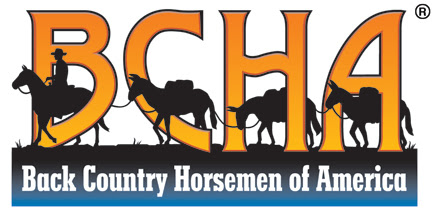Comment Online with BCHA Talking Points Below
Yosemite National Park recently issued “Preliminary Concepts & Ideas” for its forthcoming Wilderness Stewardship Plan. The plan covers over 704,000 acres of designated Wilderness, or 94%, of Yosemite National Park.
The park identified four topics that have substantive effects on wilderness and wilderness management. Those topics are visitor use and capacity, stock use, trail management, and commercial services. The park has produced preliminary concepts related to the two most complex of these topics, which are Visitor Use and Capacity and Stock Use, that are designed to direct the conversation towards productive management solutions. We recommend reading more about these topic here.
Good News: It appears that the thought process applied to the Preliminary Concepts & Ideas are something that horsemen could live with. But we need your suggestions in the form of comments to the Park Service for improvement.
Please submit your personal comments by September 30th, 2016 (details below). BCHA needs your voice to ensure that Yosemite Wilderness remains accessible and enjoyable for recreational stock users.
The most pressing issue appears to be open meadow grazing by pack stock and what restrictions, if any, should apply to small parties with pack stock. More is known today about the sensitivity of Yosemite’s montane and subalpine meadows than in the 1980s
when the park’s current Wilderness Plan was written. For example, Yosemite’s high meadows are home to rare and unique plant life, wetlands (“fens”), and hold a number of intact archaeological sites.
Nonetheless, the Park Service in recent public meetings continues to acknowledge the important history of stock use in the park and has stated publicly that:
“The use of stock for pack trips and personal travel is a unique and special way to experience Yosemite’s wilderness.”
So we see little to no risk to continued stock access. Rather, the main issue appears to be: How can stock users minimize their imprint on the park’s high meadows?
Take Action
You can submit scoping comments by September 30th via U.S. Mail or through the Park Service’s online planning portal, “Comment Now” link
Or mail can be sent to:
Superintendent
Yosemite National Park
Attn: Wilderness Stewardship Plan Preliminary Ideas and Concepts
PO Box 577, Yosemite, CA 95389
At the end of this Action Alert are recommended talking points you might consider adding to your personal comments to Yosemite National Park. It’s important to use you own words and add your own personal story among these talking points.
The online “Submit Comments” page is easy to use. You can choose either to: 1) Type-in general comments near the bottom of the page; 2) Upload a personal letter by clicking “Print Form” in the left-column menu; 3) Type-in or paste an answer to some or all of the “Topic Questions;” or 4) Any combination of the above steps.
Please use the talking points below to create your own custom response, because group letters or copied letters are only considered as a single comment by the Park Service.
Thank you for taking action!
We are optimistic that your input will help to ensure the continued access and enjoyment of Yosemite Wilderness by pack and saddle stock users!
Recommended Talking Points
Topic Questions:
1. Have we identified a sufficient range of concepts to address visitor use and capacity?
Yes. There appears to be a sufficient range of concepts to address visitor use and capacity as it applies to overnight visitation by parties on foot (i.e., backpackers). Given the growing popularity of overnight backpacking in Yosemite Wilderness, such concepts appear warranted in order to encourage sustainable use and to enhance the quality of the public’s wilderness experience. Concepts to address stock use (below) are intended to address overnight visitor capacity issues related to parties with pack and saddle stock.
2. Have we omitted any key ideas related to visitor use and capacity?
Add your own ideas here…
3. What do you like about the visitor use and capacity concepts?
The concepts include an interesting mix of either trailhead quotas, quotas by zone, destination quotas, and/or designated campsites as they apply to overnight backpacking use. As such, the concepts appear useful in exploring the issue of over use and crowding in Wilderness. I will be interested to learn how they are received by the backpacking community. I appreciate the effort being taken to reduce crowding in Yosemite Wilderness and to promote a feeling of solitude that is appreciated by hikers and pack stock users alike.
4. Are there specific elements of the visitor use and capacity concepts that should be changed? How would you change them?
Add your own ideas here…
5. Have we identified a sufficient range of concepts to address stock use?
Yes. I understand that the Park Service must consider a reasonable range of alternatives in addressing key issues associated with the Wilderness Stewardship Plan. While details have yet to be revealed regarding proposed meadow grazing restrictions for small parties with stock (Concept Two), Concept Three and its prohibition of open meadow grazing would prove overly burdensome for most stock users. A grazing prohibition would require parties to bring more stock to haul in supplemental feed and, as such, would appear to run counter to the desire to minimize the number of head associated with stock parties. Given that the range of concepts to address stock use currently runs from one that remains close to status quo (Concept One) to a concept that would likely be untenable to stock users (Concept Three), the current range of concepts appears more than sufficient for planning purposes.
6. Have we omitted any key ideas related to stock use?
Other site-specific methods to reduce the footprint of open meadow grazing should be considered in tandem with group size and head-of-stock limitations. Examples include use of portable electric fencing, as mentioned by the Park Service during recent public meetings.
I request that Park personnel consider working in partnership with Backcountry Horsemen of California (BCHC) to develop a park-wide “Leave No Trace” (LNT) program for inclusion in the WSP. Under contract with Leave No Trace Center for Outdoor Ethics in Boulder, Colorado, BCHC is the sole authorized Stock LNT Master Educator Provider in the U.S. and the only “Leave No Trace” authorized Provider west of the Rocky Mountains. In developing the WSP, park personnel should consider entering into a formal partnership with BCHC for the development of a visitor education and LNT program for equine visitors to Yosemite National Park.
Access to the Yosemite Wilderness at present by private horsemen is often difficult. The WSP should consider, and make efforts to accommodate, the logistical needs of pack stock users who do not enter park Wilderness via adjacent national forests or private land. For example, the WSP should address the need for adequate trailer parking at park trailheads and front country camping areas for person who haul their own horses and mules.
In order to reduce the potential for visitor conflict, the WSP should include proactive methods of visitor education, including the use of interpretive materials to be made available at Wilderness trailheads or when persons obtain a wilderness permit, to convey to hikers and backpackers to expect encounters with parties accompanied by pack stock. The WSP also should detail methods by which visitors traveling via foot and with pack stock could enhance communication and work to minimize “conflict” between user groups. Adjusting the mindset and expectations of individuals prior to leaving the trailhead appears to represent a first step in minimizing perceptions of conflict in Yosemite Wilderness.
7. What do you like about the stock use concepts?
I am happy to see that none of the draft concepts contain proposals to limit the location or number of trail miles currently available to private stock users in park Wilderness. This appears consistent with the minor amount of private stock use in park Wilderness (6% of all overnight stock use) and the lack of documented adverse impacts to trails or water quality resulting from stock use. For these reasons, I agree and am pleased to see that the draft concepts do not propose to arbitrarily limit the number of trail miles available to private stock users.
Concept One allows for improved management practices and reduces impacts by large stock parties; it represents an improvement over current practices. I do, however, believe that the proposed 6 head of stock threshold for unrestricted meadow grazing by private parties is overly restrictive, given there are other methods yet to be explored to isolate the footprint of stock grazing. With private stock use representing only 6% of overnight stock use in park Wilderness, I believe a small party size not subject to grazing restrictions of 10 head or less is more appropriate.
8. Are there specific elements of the stock use concepts that should be changed? How would you change them?
The proposal in Concept Three to prohibit grazing by pack stock, regardless of party size, and the requirement to haul all feed into the Wilderness would require parties to bring more stock animals to pack in the necessary feed for the duration of their visit. That could equate to 2 or more additional stock per party and effectively reduce the number of persons in small parties (6 head or less not being subject to grazing restrictions) to as few as 2 or 3 people. Doing so would eliminate the current option for relatively small families to enjoy Yosemite Wilderness in the same party.
I value the relatively primitive and unconfined recreational experience associated with current management of Yosemite Wilderness. The unconfined nature of that experience currently affords pack stock users a modest amount of freedom, in the absence of onerous regulations, to travel, camp and graze my pack stock in park Wilderness. Regulations proposed in Concepts Two and Three related to either a grazing prohibition or establishing a maximum party size of 6 head not subject to grazing regulations would, in my view, run counter to the relatively unconfined recreational experience currently enjoyed by small parties with stock in Yosemite Wilderness.
9. Did we omit any issues that you would like us to address in the future? How would you address that issue?
Add your own ideas here…


The Northwest Horse Source is an independently owned and operated print and online magazine for horse owners and enthusiasts of all breeds and disciplines in the Pacific Northwest. Our contemporary editorial columns are predominantly written by experts in the region, covering the care, training, keeping and enjoyment of horses, with an eye to the specific concerns in our region.






